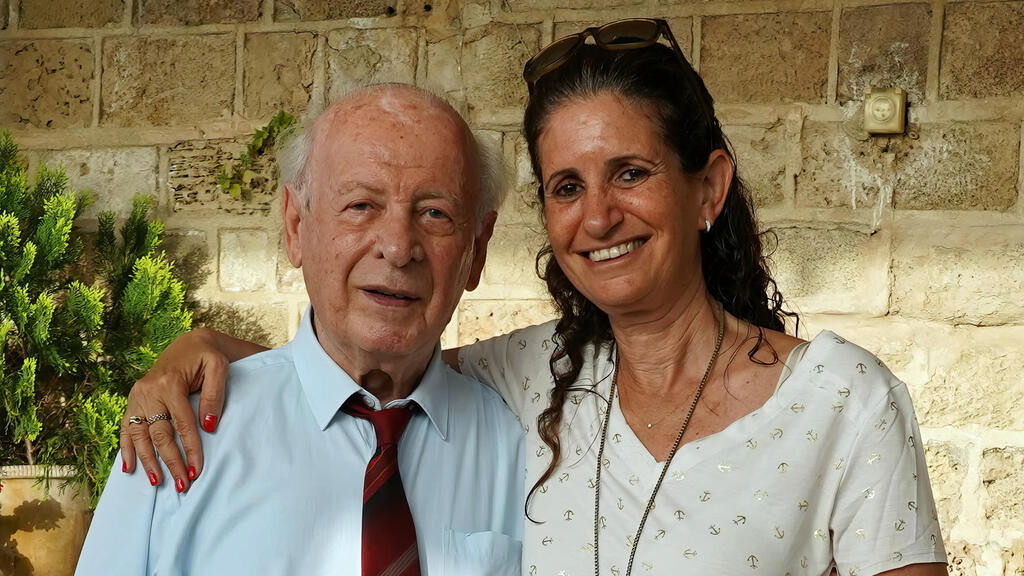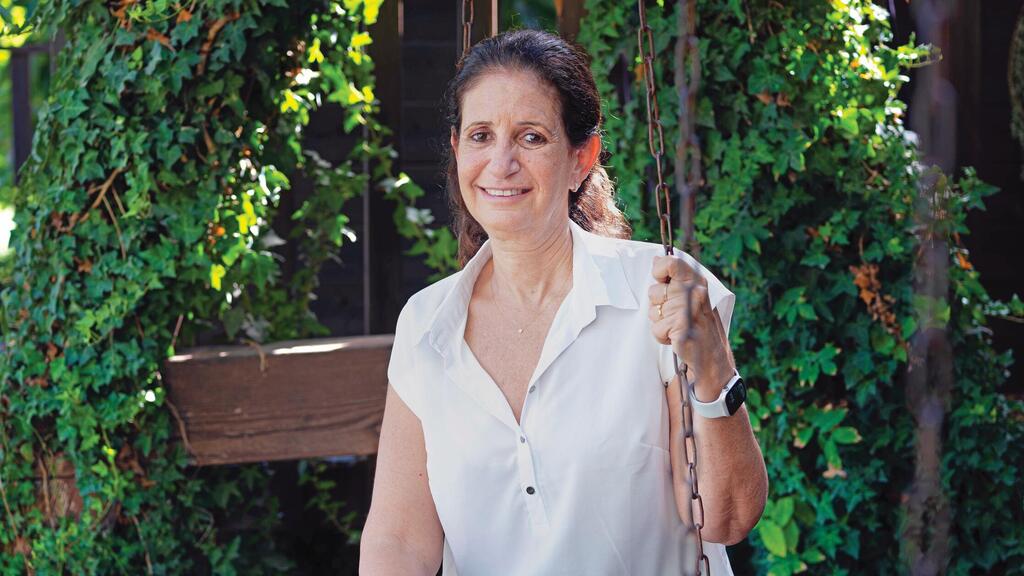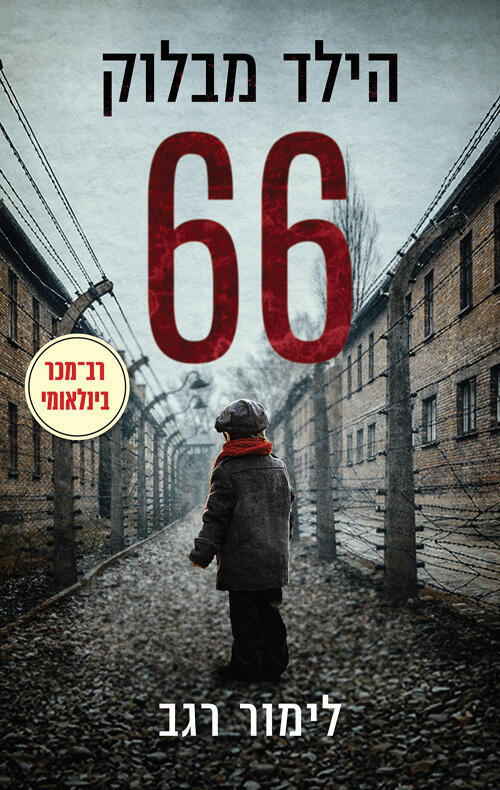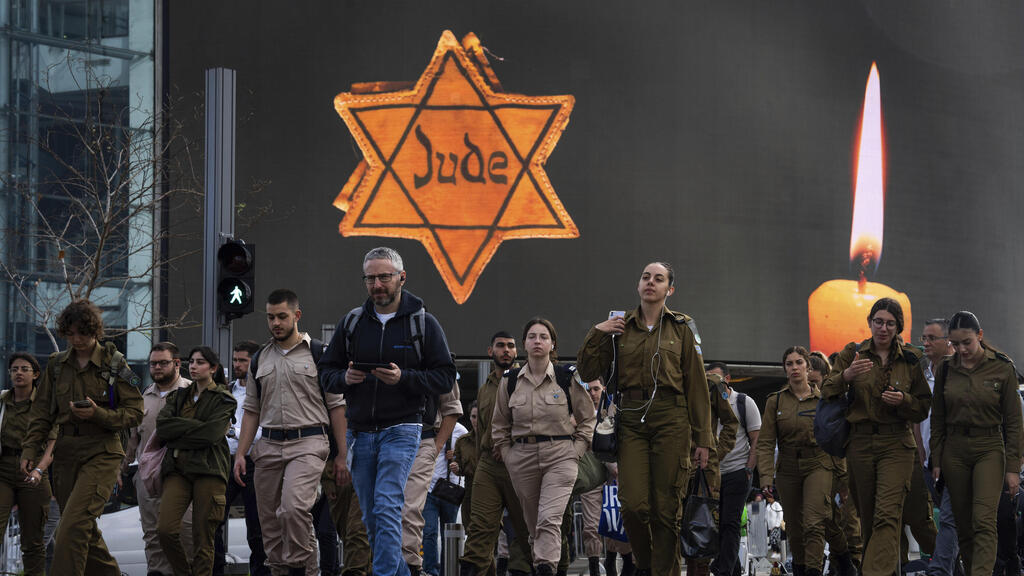Dr. Limor Regev always knew she'd one day put into writing the story of a Holocaust survivor. Among her childhood memories is an image of herself sitting on her grandfather's lap as he listed the names of his family members who perished in the Treblinka extermination camp. Later, as a teenager and an adult, she maintained a deep interest in Holocaust stories, hoping that one day she'd find the person who would turn her fascination into a tangible project.
She didn’t anticipate that the project — initiated as a gift for the 90th birthday of a friend’s father — would evolve into an international bestseller translated into ten languages. Now, the book has reached Israeli readers under the title “The Boy from Block 66.”
The journey began at the Bar Mitzvah celebration of Roie Himelhoch, a friend of Regev's eldest son, Omer. "Thanks to the boys, our families became close and Roie's mother, Anat, and I grew to be good friends. During one of our outings, she told me that her father is a Holocaust survivor.”
“I casually mentioned that I’d once thought of writing a book about a Holocaust survivor," recounted Regev 55, a married mother of two sons (21, 16) and a 19-year-old daughter from Nir Tzvi. She's also a research fellow at the Leonard Davis Institute for International Relations at the Hebrew University.
Regev holds four academic degrees: a bachelor’s in English literature and general studies with a focus on modern Judaism and American studies; a master’s in American studies and international relations; a PhD on territorial concessions along Israel's borders and another master’s in conflict research, resolution and management. She’s also a certified mediator.
Memories from home
The Bar Mitzvah took place in January 2016. Roie’s grandfather, Moshe Kessler — then 86 and now 94 — blessed his grandson and presented him with a family prayer book that survived the Holocaust. "Not a single eye was dry," Regev recalled.
"Later at the event, I approached him and said, 'If you ever want to share your story, I’d love to write it,' to which he replied, 'If I decide to, I’d like you to do it.' It took him time to come around to the idea. For decades since the Holocaust, he'd spoken about his experiences only once — during Steven Spielberg's testimony project."
"Kalina inspired hope, instilled belief in their survival and bolstered them emotionally as well as physically."
About two years later, Anat told her that her father had agreed to meet. "Once a week, I visited Moshe at his home in Ramat Gan," she said. "As a researcher, accuracy matters to me, so I asked to proceed chronologically, starting with his early childhood. I asked questions to prompt memories of everyday details, like what he enjoyed eating, his activities after school, what his home looked like, the smells and tastes.”
“He enjoyed reminiscing because he had a good childhood with a loving family and a warm community. At the outset, I knew nothing of his story. Only through our conversations did I realize it was an extraordinary tale of survival,” she recounted.
A light in the darkness
Kessler was born on September 21, 1930, in Berehove, then part of Czechoslovakia, now in Ukraine, the elder of two sons. At age nine, his life began to change dramatically when Hungary occupied the region, imposing antisemitic restrictions.
At 12, his father was sent to forced labor alongside other Jewish men from their town, leaving Moshe with his mother and younger brother. His Bar Mitzvah in September 1943, rather than the grand celebration he'd hoped for, took place in a desolate synagogue without his father — a memory that left a lifelong scar.
In April 1944, Nazi Germany occupied the area and Jews, including Moshe’s family, were sent to the ghetto and shortly after to the Auschwitz-Birkenau concentration camp. From that moment, Kessler's life, then just 13-and-a-half, became a series of miraculous escapes aided by kind individuals.
Upon arrival at the camp, an inmate urged him to part from his mother and younger brother and claim to be 16. In line at the tattoo station, he stood next to Shani (Sandor), a boy his age from his neighborhood who became his inseparable companion. They survived thanks to the extraordinary shelter provided by Block 66 in the Buchenwald concentration camp, which is the book’s namesake.
"Moshe found himself emotionally detached — a coping mechanism that had allowed him to survive the horrors. He feared he’d lost the ability to feel."
What made Block 66 so remarkable?
"In January 1945, as Soviet forces approached Auschwitz, the Germans evacuated the camp, leading the inmates, including Moshe and Shani, on a death march. After a grueling journey on foot and in coal trains they arrived at Buchenwald. There, as in earlier stages of their ordeal, they heeded advice that saved their lives: 'Try to get to Block 66.'
"This block housed only boys aged 12–18 — up to 1,000 at its height — under the leadership of Antonin Kalina, a Czech political prisoner and member of the camp's international underground.
Though conditions were crowded, the boys received relatively fair treatment. Kalina kept them away from forced labor and roll calls in freezing weather, secured blankets for them, wrote 'Typhus' on the door to deter the Germans and even distributed chocolate from Red Cross packages. Jewish inmates provided them with Hebrew lessons.
"When Moshe spoke of Kalina, he called him an angel and a 'ray of light in the darkness,' saying he owed his life to him. Kalina inspired hope, instilled belief in their survival and bolstered them emotionally as well as physically."
How long were they in Block 66?
"Only a few months. American forces liberated the camp and the military rabbi accompanying them distributed prayer books to the boys. After the war ended in May 1945, Moshe and Shani returned home, where Moshe discovered that his mother had survived but his younger brother perished in Auschwitz.
“The reunion with his mother was tense; after years of separation and trauma, Moshe found himself emotionally detached — a coping mechanism that had allowed him to survive the horrors. He feared he’d lost the ability to feel.
5 View gallery
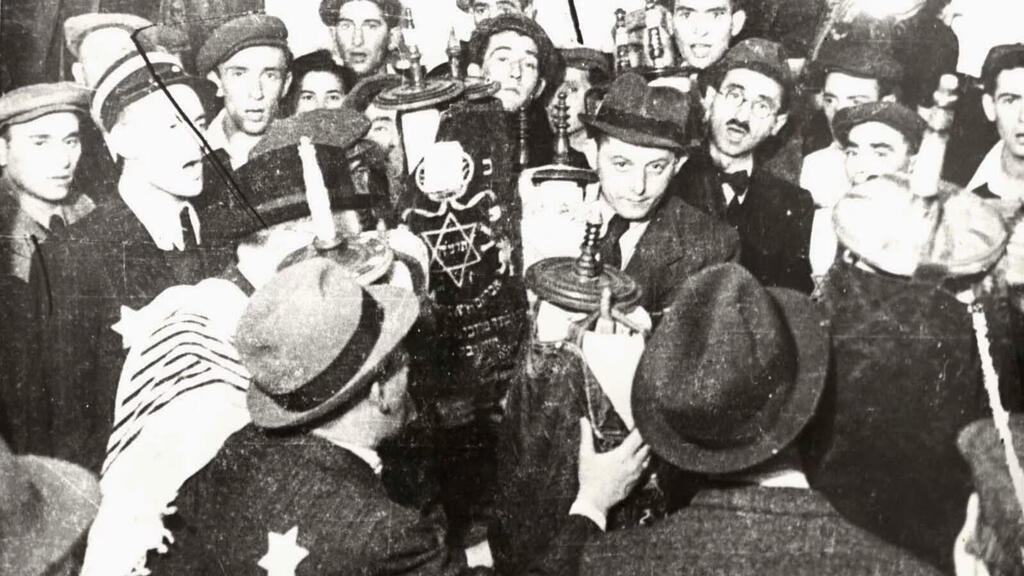

Jews celebrating holidays in the Ghetto
(Photo: Mendel Grossman, Yad Vashem Archives)
“It was only when his mother told him of his father’s death on the war's last day that he broke down in tears, regaining his capacity for emotion."
Kessler, his mother and her second husband made aliyah to Israel in 1949. There, he met Eva, a Holocaust survivor from Bratislava. He enlisted in the IDF in 1950. "He said that serving in the army healed him, as holding a weapon made him feel no longer helpless." The couple raised two daughters in Ramat Gan and were grandparents to four grandchildren.
Stage play in production
How did the book come about?
During the COVID-19 lockdown in January 2021, Regev decided to compile Kessler’s story. Shortly after losing Shani, his lifelong friend, Kessler also lost his beloved wife. "In some ways, the book helped him recover," Regev noted.
With his daughter's agreement, Regev printed 50 copies for Kessler’s 90th birthday, to distribute among friends and family. The positive reception encouraged her to publish the book for a wider audience through a company specializing in translations and distribution on Amazon.
"Kalina kept them away from forced labor and roll calls in freezing weather, secured blankets for them, wrote 'Typhus' on the door to deter the Germans and even distributed chocolate from Red Cross packages."
The English edition received glowing reviews, selling 100,000 copies and counting. It’s been translated into Czech, Russian, Albanian, Italian, German, Hungarian, Polish and is in progress for Korean, Spanish and Romanian. A stage play adaptation is set to premiere in Florida in January 2025.
Who’s the book’s target audience?
"Everyone, though Moshe was particularly keen for Israeli youth to know his story, to appreciate the existence of a Jewish state and to understand the importance of helping those in need while ensuring the Holocaust's lessons aren’t forgotten."
How do you explain the book’s unexpected success?
"It vividly depicts a normal childhood before the Holocaust, allowing readers to connect with Moshe as a relatable child. By the time he reaches Birkenau and must face unimaginable horrors alone, we feel a deep bond with him.
“The story stresses the power of individual acts of courage and the profound impact one person can have. It’s not just a Holocaust story but a tale of resilience, ingenuity and faith in humanity."
What impact has the book had on Moshe Kessler?
"In April 2022 — 77 years after his liberation — he visited Buchenwald for the first time, representing himself and Shani. His first steps into the camp were broadcast in Israel on Holocaust Remembrance Day (Yom HaShoah).
“In October 2023, we traveled to Prague together for the Czech edition’s release, continuing to Trebic, Kalina’s hometown. Moshe is deeply moved that his story has reached so many, spreading its messages."
Get the Ynetnews app on your smartphone: Google Play: https://bit.ly/4eJ37pE | Apple App Store: https://bit.ly/3ZL7iNv
Did you expect this outcome?
"Not at all. I simply wanted to contribute to Holocaust remembrance. The story doesn’t end here. After learning about Antonin Kalina, I began focusing on him.
“I recently completed two years of research, including ten trips to his hometown and am now writing a book about the man whose actions saved the lives of 1,000 Jewish children during the Holocaust. Though he was named Righteous Among the Nations in 2012, his story remains little known and it deserves recognition."


